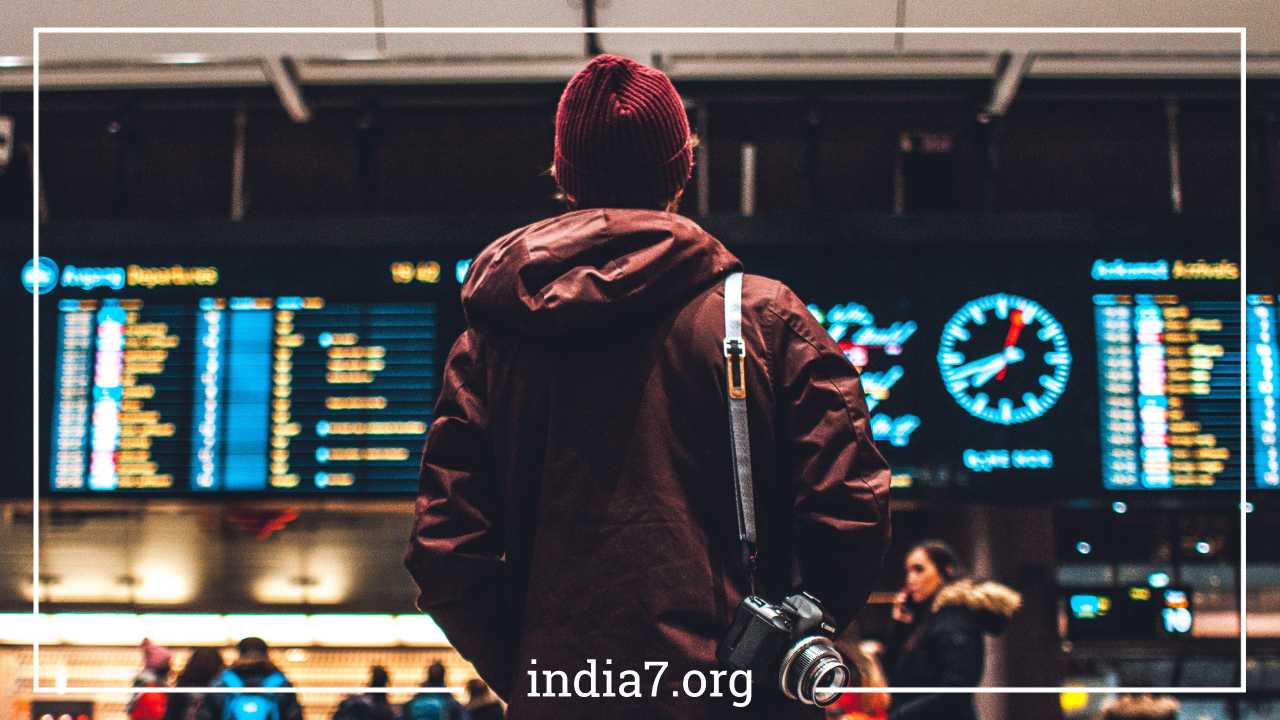International Travelling Tips and Tricks You Should Must Know

International Travelling Tips and Tricks You Should Must Know
Traveling internationally is an exciting endeavor that offers opportunities for adventure, cultural exploration, and business ventures. Each year, millions of Americans take the plunge and decide to venture beyond their nation’s borders. Whether your international trip is for leisure or business, it’s essential to recognize that international flights come with a unique set of considerations and challenges compared to domestic travel.
Proper preparation is the key to ensuring a smooth and enjoyable journey. In this comprehensive guide, we will delve into every aspect of preparing for your international flight, from planning your travel arrangements to navigating airport security with ease.
1. Initial Preparations
Before you even begin thinking about what to pack, there are crucial initial preparations you need to make to ensure a seamless international travel experience.
1.1. Research Your Destination
Begin by researching your destination. Understand the local culture, customs, and any specific travel advisories or requirements that may apply to your chosen location. This knowledge will help you adapt and respect local customs during your visit.
1.2. Passport and Visa Requirements
Check the expiration date on your passport. Most countries require your passport to be valid for at least six months beyond your planned return date. If your passport is close to expiring, consider renewing it before your trip. Additionally, determine whether you need a visa to enter your destination country. Visa requirements can vary widely depending on your nationality and your destination, so check with the consulate or embassy of the country you plan to visit.
1.3. Vaccinations and Health Precautions
Some countries require travelers to provide proof of certain vaccinations or medical documentation. Check if any vaccinations or health precautions are necessary for your destination and schedule any required vaccinations well in advance of your trip. It’s also a good idea to carry a small travel health kit with essentials like pain relievers, motion sickness medication, and any prescribed medications you take regularly.
1.4. Travel Insurance
Consider purchasing travel insurance to protect yourself in case of unexpected events, such as trip cancellations, medical emergencies, or lost luggage. Carefully review the policy to understand what it covers and make sure it meets your needs.
1.5. Currency Exchange and Financial Planning
Research the currency of your destination and consider exchanging a small amount of money before your trip for immediate expenses like transportation from the airport to your accommodation. Notify your bank or credit card provider about your travel plans to avoid any issues with using your cards abroad. Familiarize yourself with the local currency conversion rates to have a sense of the value of your money in the destination country.
2. Booking Your Travel Arrangements
Once you’ve completed the initial preparations, it’s time to book your travel arrangements. This includes flights, accommodation, and any other transportation or activities you plan to engage in during your trip.
2.1. Flight Reservations
When booking your international flight, consider the following tips:
- Book Early: International flights tend to fill up quickly, so it’s wise to book well in advance to secure the best prices and seat options.
- Flexible Dates: Be flexible with your travel dates, if possible. Flying on weekdays or during the off-season can often result in lower airfare.
- Direct vs. Connecting Flights: Decide whether you prefer direct or connecting flights. Direct flights are convenient but may be more expensive, while connecting flights can be more affordable but may involve longer travel times and potential layovers.
- Airlines and Alliances: Research different airlines and alliances to find the most convenient and cost-effective options for your destination. Consider factors like baggage allowances, in-flight services, and seat comfort.
- Airport Choices: When booking, consider the airports you’ll be flying in and out of. Some airports may be more convenient or cost-effective than others, so explore your options.
- Travel Agencies: If you’re unsure about booking flights independently, consider using a travel agency that specializes in international travel. They can help you navigate the complexities of international flight bookings.
2.2. Accommodation
Selecting the right accommodation is crucial for a comfortable and enjoyable trip. Consider these factors when booking your stay:
- Location: Choose a location that aligns with your travel goals. Whether you prefer staying in the heart of the city, near tourist attractions, or in a quieter neighborhood, your accommodation’s location can significantly impact your experience.
- Budget: Determine your budget for accommodation and look for options that fit within it. Consider alternatives like hotels, hostels, vacation rentals, or even boutique guesthouses.
- Amenities: Prioritize amenities that matter most to you. This could include Wi-Fi, breakfast, fitness facilities, a pool, or a spa. Read reviews and check the hotel’s website for detailed information.
- Cancellation Policies: Given the uncertainty that can come with international travel, it’s wise to choose accommodation with flexible cancellation policies in case your plans change.
2.3. Transportation and Activities
If you plan to explore your destination or take day trips during your stay, research and book transportation options, tours, or activities in advance. This can help you make the most of your time and ensure availability, especially for popular attractions or tours.
3. Packing for Your International Flight
Packing for an international trip requires careful consideration of what to bring, what to leave behind, and how to organize your belongings. Follow these packing guidelines:
3.1. Check the Weather
Check the weather forecast for your destination during your travel dates. This will help you pack appropriate clothing and accessories. Be prepared for unexpected weather changes by packing versatile items.
3.2. Create a Packing List
Make a detailed packing list to help you stay organized. Categorize items by type, such as clothing, toiletries, electronics, and travel documents. Check items off the list as you pack them to avoid forgetting essentials.
3.3. Travel Documents and Essentials
Ensure you have all the necessary travel documents and keep them in a secure, easily accessible location. Common travel documents and essentials include:
- Passport (with at least six months of validity)
- Visa (if required)
- Driver’s license or other government-issued identification
- Airline tickets and boarding passes
- Travel insurance documents
- Itinerary with contact information
- Credit cards and cash (in local currency)
- Medications and prescriptions
- Travel adapter and chargers
- Travel pillow and eye mask
- Travel-sized toiletries
3.4. Packing Tips
- Pack Light: Aim to pack as lightly as possible to avoid excessive baggage fees and make your trip more manageable. Choose versatile clothing that can be mixed and matched.
- Roll or Fold: Decide whether to roll or fold your clothing based on your preferences and the type of clothing. Rolling can save space and reduce wrinkles, while folding may be better for bulkier items.
- Pack by Outfit: Organize your clothing by outfit to make getting dressed each day more straightforward. Place each outfit, including accessories, in a separate packing cube or bag.
- Layering: Bring lightweight layers that you can add or remove to adapt to varying temperatures. This is especially important if you’re visiting multiple destinations with different climates.
- Pack an Empty Bag: Consider packing an empty collapsible bag or duffel for souvenirs or additional items you may acquire during your trip.
3.5. Luggage and Bags
Choose appropriate luggage based on your travel style and needs:
- Carry-On Bag: Opt for a carry-on bag that complies with your airline’s size restrictions. This allows you to keep essential items close during the flight and avoid baggage claim wait times.
- Checked Baggage: If you’re checking luggage, invest in a durable suitcase with a built-in lock. Use luggage tags with your contact information in case your bag is lost.
- Personal Item: Most airlines allow one personal item in addition to your carry-on. This could be a small backpack, tote bag, or laptop bag.
4. Understanding Airport Security
Airport security measures are in place to ensure the safety of all passengers and crew members. Understanding these procedures and complying with them is essential for a smooth airport experience.
4.1. Security Screening Process
The security screening process at airports involves several steps:
- Document Check: Present your passport, visa, boarding pass, and any required travel documents to airport staff.
- Security Checkpoint: Prepare for the security checkpoint by removing items like belts, jackets, and shoes. Place liquids in a quart-sized, resealable plastic bag (each container should be 3.4 ounces or less). Place laptops and other large electronics in a separate bin for screening.
- Body Scan or Pat-Down: You may be subjected to a full-body scanner or a pat-down by security personnel. Follow instructions from airport staff during this process.
- Baggage Screening: Your carry-on and checked luggage will go through X-ray screening. Be prepared to open your bags for further inspection if necessary.
4.2. Prohibited Items
Understanding what items are prohibited aboard an airplane is crucial. While specific rules may vary by country and airline, here are common items that are typically restricted or prohibited:
- Liquids: Most airports follow the 3-1-1 rule, allowing containers of liquids, gels, or aerosols that are 3.4 ounces (100 milliliters) or less per item, all of which must fit in a quart-sized, resealable plastic bag.
- Sharp Objects: Many sharp objects, such as scissors, pocket knives, and tools, are not allowed in your carry-on baggage. These items should be packed in your checked luggage.
- Explosives and Flammable Materials: All explosive and flammable objects are strictly banned from airplanes, including both carry-on and checked baggage.
It’s essential to familiarize yourself with the specific rules enforced by the airport and airline you’re using. Regulations can vary, so checking in advance can save you time and potential headaches at the security checkpoint.
4.3. International Airport Security
International airports typically have heightened security measures compared to domestic airports. These measures are in place to ensure the safety of passengers traveling across borders. Key considerations for international airport security include:
- Customs Declarations: Be prepared to complete a customs declaration form upon arrival in your destination country. Declare any items, such as currency or goods, as required by the customs regulations of the country you’re entering.
- Passport Control: After your flight, you’ll go through passport control, where immigration officers will review your passport and visa (if applicable). Answer any questions truthfully and follow all instructions.
- Additional Screening: Some international airports may conduct additional screening, such as random bag checks or interviews with passengers. Cooperate with airport staff during these processes.
4.4. Arrival and Connecting Flights
If you have a connecting flight at an international airport, be mindful of the time it takes to clear immigration, customs, and security. Generally, it’s advisable to have at least a two-hour layover between international flights to allow for these processes. However, the recommended layover time may vary depending on the airport and the country you’re traveling to or from.
5. Preparing for In-Flight Comfort
Long international flights can be physically and mentally taxing. To enhance your in-flight comfort and minimize the effects of jet lag, consider the following tips:
5.1. Dress Comfortably
Wear comfortable clothing and choose layers that allow you to adjust to changing cabin temperatures. Opt for loose-fitting clothing and breathable fabrics.
5.2. Stay Hydrated
Dehydration is a common issue during long flights due to the dry cabin air. Drink plenty of water before, during, and after your flight to stay hydrated. Avoid excessive caffeine and alcohol consumption, as they can contribute to dehydration.
5.3. Bring Entertainment
Pack entertainment options to keep yourself occupied during the flight. This could include books, magazines, movies, music, or games. Many airlines offer in-flight entertainment systems as well.
5.4. Move and Stretch
Sitting in the same position for extended periods can lead to discomfort and stiffness. Make an effort to get up and walk around the cabin periodically. Perform simple stretches in your seat to improve circulation.
5.5. Noise-Canceling Headphones
Consider investing in noise-canceling headphones to block out the ambient noise of the aircraft and create a more peaceful environment for yourself.
5.6. Sleep Aids
If you plan to sleep during the flight, bring sleep aids such as a neck pillow, eye mask, and earplugs to maximize your chances of restful sleep.
6. Preparing for Your Return Trip
While enjoying your international adventure, don’t forget to plan for your return trip. Here are some considerations:
6.1. Check Visa and Passport Expiration
Verify the expiration dates of your visa and passport to ensure they will remain valid throughout your entire trip, including your return journey.
6.2. Currency Exchange
If you have any remaining local currency, consider exchanging it back to your home currency before leaving your destination to avoid unfavorable exchange rates at the airport.
6.3. Souvenirs and Gifts
Purchase souvenirs and gifts well in advance of your departure to ensure you have enough time to pack them securely. Be aware of any restrictions on bringing certain items back into your home country.
6.4. Packing
Revisit your packing list and make sure you haven’t left any essential items behind in your accommodation. Ensure that you’ve packed all your belongings securely, and your bags are within the weight limits set by your airline.
7. Final Thoughts
International travel is an exciting and rewarding experience that broadens your horizons and creates lasting memories. Proper preparation is the key to a successful and enjoyable journey. By following the steps outlined in this comprehensive guide, you’ll be well-equipped to handle every aspect of your international flight, from initial preparations to clearing airport security and maximizing in-flight comfort. Whether you’re traveling for leisure or business, a well-planned trip is more likely to be a stress-free and memorable one. So, embrace the adventure and savor every moment of your international travel experience!



